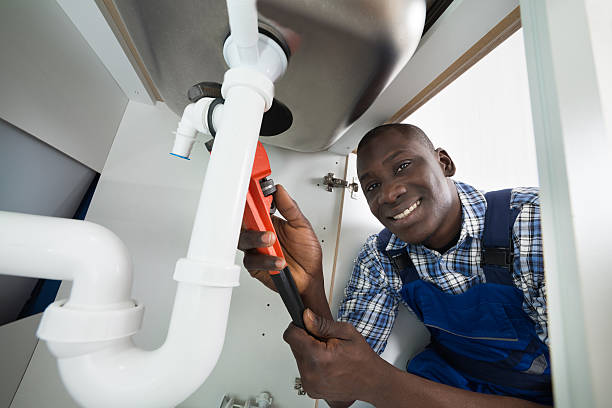Trusted Plumbing Services Alabaster AL for All Your Repair works
Trusted Plumbing Services Alabaster AL for All Your Repair works
Blog Article
A Detailed Overview to Effective Hot Water Heater Installment for Ideal Performance
Beginning on the task of installing a water heater is a venture that demands precision and an organized technique for attaining ideal efficiency. As you continue, the ins and outs of connecting water supply lines and setting up dependable electric or gas connections wait for, encouraging understandings into making certain efficiency and reliability.
Choosing the Right Water Heating System

Next, consider the dimension and capacity of the hot water heater. It's crucial to evaluate your house's warm water needs, which can vary based upon the variety of owners and their use patterns. An unit that's as well small may result in not enough hot water, while an oversized version may result in unneeded energy intake.
Efficiency scores also play a critical duty in option. Seek hot water heater with high Energy Variable (EF) ratings, showing superior efficiency and minimized power usage. Tankless versions, though typically a lot more pricey upfront, offer substantial power cost savings with time as a result of their on-demand home heating capacities.
Preparing the Installment Location
Before installing a new water heater, careful prep work of the installation location is essential. It's important to measure the area meticulously to suit the water heater's measurements, guaranteeing ample clearance around the system for efficient operation and maintenance.
Check the floor for stability, as the water heater will certainly require a solid, level surface area to operate effectively. If necessary, install a drip frying pan below the system to capture prospective leaks or spills, stopping water damage to the surrounding area.
Additionally, make sure that all essential tools and materials are on hand prior to beginning the setup. This includes things such as wrenches, screwdrivers, a degree, and any added hardware required for safeguarding the heating system and placing. A well-prepared installment location establishes the structure for a successful hot water heater configuration, optimizing efficiency and security.
Connecting Supply Of Water Lines
When linking water supply lines to your recently installed water heating system, it is crucial to ensure that all connections are leak-free and safe to keep efficient procedure and protect against water damage. Begin by identifying the warm and cold supply of water lines. The cold water inlet is generally marked with a blue tag or a "C", while the hot water electrical outlet is marked with a red label or an "H".
Usage adaptable water heating system connectors to promote a less complicated setup process. Prior to affixing the adapters, position a plumbing technician's tape around the threaded ends of the water heater's inlet and electrical outlet pipes.
When connections are in place, slowly switch on the major water supply shutoff. Examine each connection for leakages by visually feeling and examining for moisture. Tighten up connections as needed, and ensure the pressure relief shutoff is appropriately set up, safeguarding against extreme stress accumulation.
Establishing Electric or Gas Connections
Effectively setting up the electric or gas links for your hot water heater is a crucial action to ensure reliable and secure operation. For electrical hot water heater, begin click over here by confirming that the electric circuit is suitable with the heater's voltage and amperage demands. Make certain the power supply is switched off at the circuit breaker to avoid accidents. Link the electrical cords to the heater adhering to the manufacturer's electrical wiring representation. Normally, this involves attaching the ground cable to the environment-friendly terminal, and the staying wires to their corresponding terminals, protecting each with cord nuts.
For gas water heating systems, safety is paramount. Attach the gas line visit our website to the water heating system using an adaptable gas port, ensuring it is effectively threaded and sealed with pipeline joint compound or Teflon tape ideal for gas links.
Once connections are made, inspect for any prospective leakages. For gas lines, use a soapy water option to the joints; bubbles indicate a leakage. For electrical connections, double-check that all circuitry is protected and effectively protected, maintaining conformity with local electrical codes.
Adjusting and evaluating for Performance
With the electrical and gas connections firmly in place, the next action is evaluating the operational effectiveness of your hot water heater. Begin by thoroughly switching on the water and guaranteeing there are no leakages at any one of the valves or joints. As soon as verified, continue to fill up the container, focusing on the stress and temperature level setups. It is suggested to set the thermostat to a suggested temperature of around 120 ° F(49 ° C) to balance power efficiency and convenience.
Next, execute a thorough examination to ensure the burner or burner are working correctly. For electrical heaters, utilize a multimeter to validate if the elements are attracting the appropriate current. In gas versions, observe the burner flame; it needs to be blue and consistent, indicating reliable burning.
Change the setups as necessary to eliminate inefficiencies. Think about applying insulation steps, such as adding a water heating system blanket, to even more boost efficiency by decreasing warmth loss. Furthermore, inspect the anode rod's condition, as a deteriorated pole can minimize performance and result in container rust.
Conclusion
Effective water heating unit installation is vital for ensuring optimal performance and energy cost savings. Safely attaching water supply lines and carefully setting up electrical or gas connections reduce prospective problems.

Properly setting up the electrical or gas links for your water heating system is an essential step to ensure secure and effective operation. For electrical water heating units, start by validating that the electric circuit is suitable with the heater's voltage and amperage requirements. Link the gas line to the water heater using an adaptable gas port, ensuring it is effectively threaded and sealed with pipeline joint substance additional hints or Teflon tape ideal for gas links.
Report this page